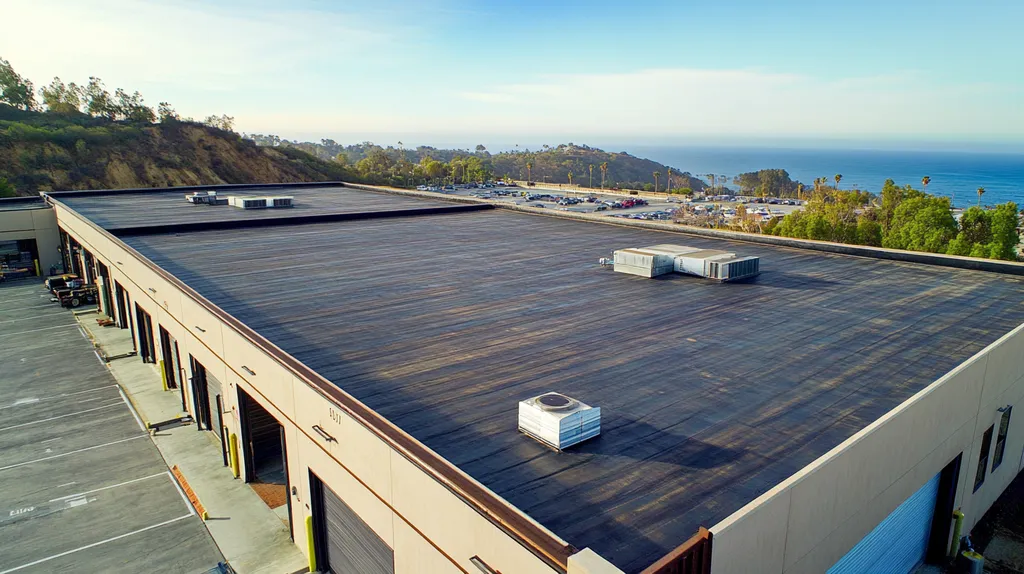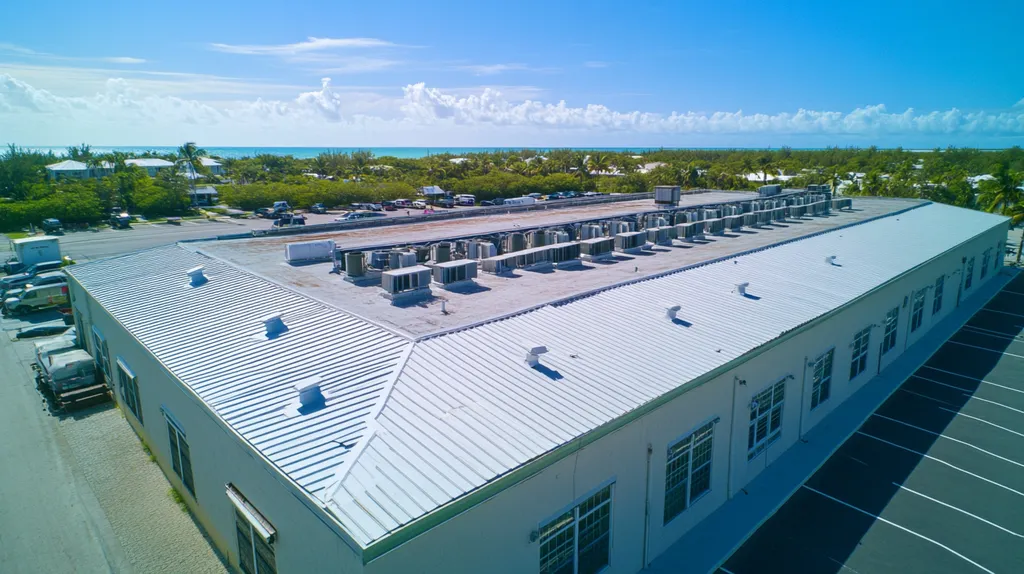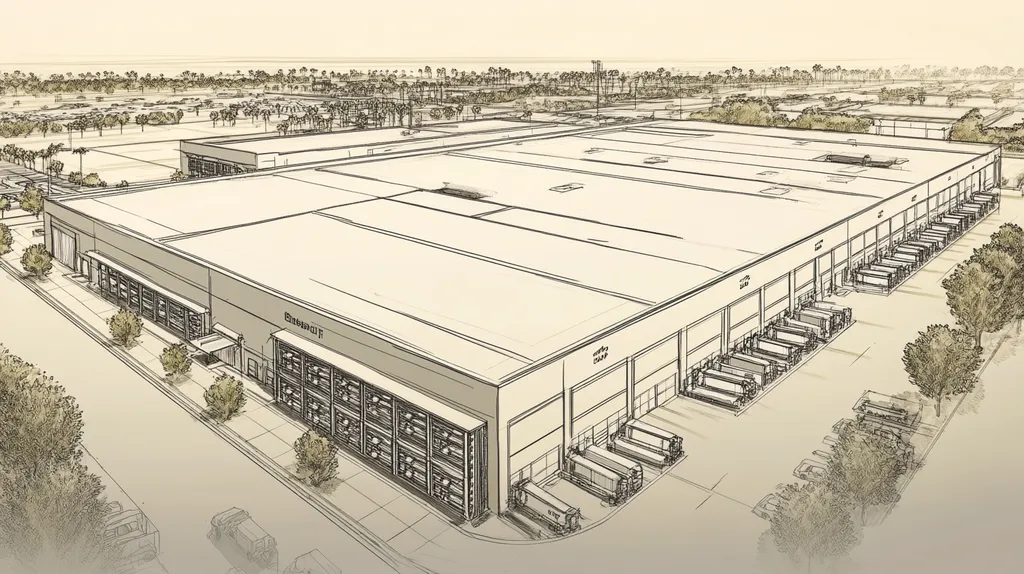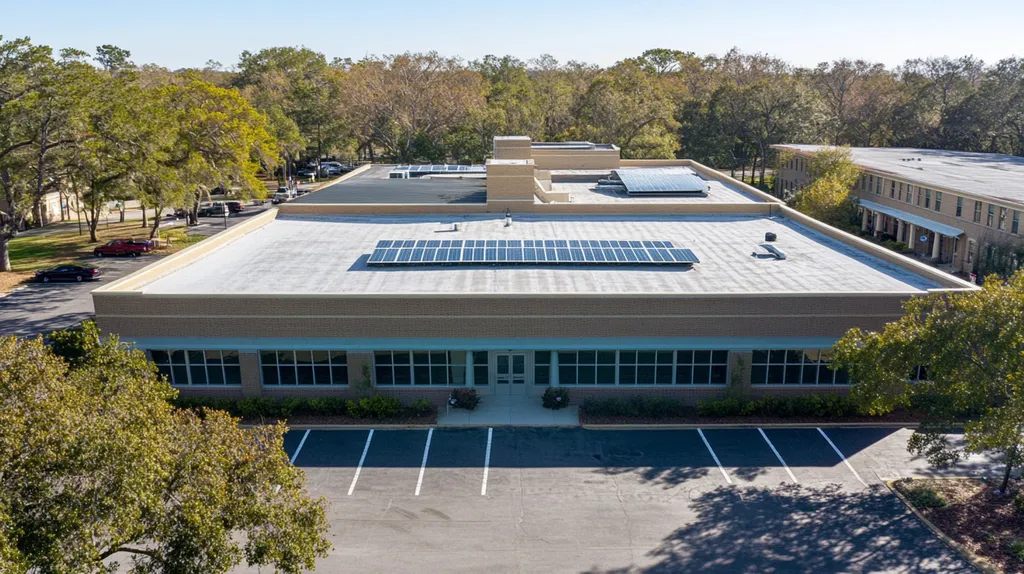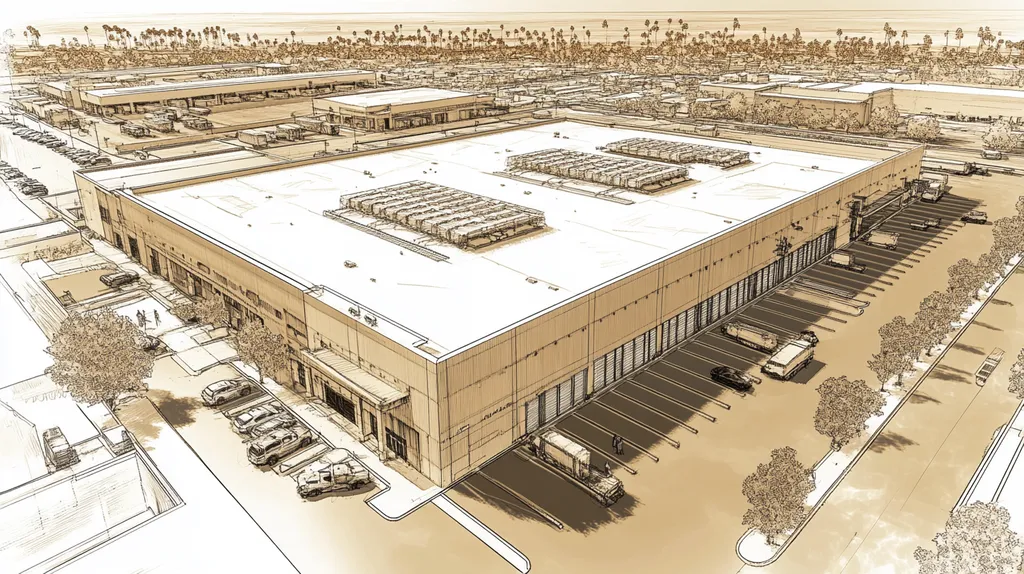Commercial roofing failures cost U.S. businesses over $2.5 billion annually in repairs, with 75% of these expenses directly attributable to inadequate quality standards and maintenance.
For facility managers, maintaining stringent roofing quality standards isn’t just about preventing leaks—it’s about protecting assets, ensuring operational continuity, and managing risk.
This comprehensive guide provides actionable solutions across six critical areas: performance factors, financial considerations, compliance requirements, risk management, operational procedures, and long-term planning strategies.
SECTION 1: PERFORMANCE FACTORS
Commercial roofs often take a backseat in property maintenance, yet their condition is vital for maintaining property value and enhancing operational efficiency. Research indicates that neglecting roof upkeep can lead to daunting repair bills, sometimes exceeding $25,000. For facility managers, understanding the critical performance factors is essential for maximizing a roof’s lifespan. This section covers crucial aspects, including roof surface debris, evidence of ponding and water damage, and the integrity of flashing and seams—all areas that require consistent attention and prompt intervention.
Roof Surface Debris and Obstructions
The buildup of debris on a commercial roof can significantly hinder its performance. Items like leaves and twigs can trap moisture, accelerating wear and tear on roofing materials. Without regular inspections, these obstructions can remain unnoticed, potentially shortening the roof’s life by several years.
Clogged drains are another issue caused by surface debris. When drains are obstructed, water cannot drain off the roof effectively, leading to ponding that increases the risk of water infiltration and costly structural damage.
If left unchecked, debris can also promote the growth of moss and algae, which not only detracts from the roof’s appearance but can also damage the roofing membrane, paving the way for leaks.
Key Action Items
Evidence of Ponding and Water Damage
Ponding water presents a serious concern for facility managers. When water pools on the roof for long periods, it exerts excess pressure on roofing materials, leading to premature wear. Proper drainage is essential, but neglect can convert these systems into sources of trouble.
Ponding also creates an environment ripe for moisture infiltration, damaging insulation and underlying structures over time, which can lead to expensive repairs. Regular visual inspections can help spot standing water early, preventing significant consequences.
Water stains on interior ceiling surfaces also signal potential roof problems. These stains frequently indicate ongoing leaks, which can promote mold growth and pose health hazards due to trapped moisture.
Key Action Items
Integrity of Flashing and Seams
The flashing and seams on a commercial roof are critical for leak prevention. These components protect vulnerable areas where materials meet, such as around vent pipes or parapets. Regular checks are necessary, as deterioration can easily occur if these areas are neglected.
Damaged or missing flashing can severely compromise the roof’s waterproofing capabilities. Such failures risk significant water infiltration during heavy rain, damaging both the roof structure and interior spaces.
Seams, particularly in single-ply systems, must remain tightly sealed to function effectively. Over time, these seams can loosen or weaken, allowing moisture to penetrate, which threatens both the roof’s integrity and the safety of the building’s occupants.
Key Action Items
SECTION 2: FINANCIAL CONSIDERATIONS
Facility managers must grasp the financial impact of roofing decisions. A well-maintained roof minimizes long-term expenses, while neglect can lead to costly repairs. The National Roofing Contractors Association states that failing to maintain a roof can result in repair costs that are 3 to 5 times greater than those associated with a proactive maintenance strategy. This section dives into the cost-benefit of regular inspections, budgeting for maintenance, and the financial repercussions of neglect.
Cost-Benefit Analysis of Regular Inspections
Regular roof inspections are a pivotal investment in a facility’s future. Spending a few hundred dollars on an inspection can reveal minor issues that, if ignored, could develop into thousands in repairs. Comprehensive inspections generally cost around 1% of the total roof value, providing critical insights into its overall health.
Addressing small problems early can extend the roof’s lifespan by several years, leading to significant savings. For instance, a minor leak that costs less than $500 to repair can snowball into over $10,000 in damages if left unaddressed.
Furthermore, conducting regular inspections enhances the effectiveness of warranties. Manufacturers typically require proof of periodic inspections to honor claims, protecting against unexpected and costly replacements.
Key Action Items
Budgeting for Preventive Maintenance
Having a dedicated budget for preventive maintenance is essential for facility managers. Allocating resources for routine maintenance tasks can help dramatically decrease unexpected repair costs. Studies show that facilities with maintenance budgets enjoy roofs lasting up to 50% longer than those without.
Preventive maintenance includes essential tasks like debris removal, flashings inspection, and drainage checks. These small actions cost significantly less than emergency repairs, with routine maintenance averaging around $0.15 per square foot compared to $1.50 or more for emergency fixes.
Additionally, effective budgeting allows for better forecasting of roofing expenses. Anticipating costs helps secure funding and ensures financial stability within building operations, while uninterrupted maintenance keeps facilities running smoothly.
Key Action Items
Impact of Neglect on Repair Costs
Ignoring roof maintenance can lead to severe financial repercussions. Facility managers who overlook minor issues risk escalating them into major liabilities. A small leak, for example, may seem harmless but can result in extensive damage, costing tens of thousands to repair.
Industry data reveals that facilities that neglect regular maintenance spend an average of 20% more on repairs each year compared to those that prioritize it. Unaddressed situations can lead to mold issues, further adding to repair costs.
Moreover, neglect’s effects trickle into broader aspects of facility management, including asset depreciation, soaring energy bills, and potential downtime. Such challenges can impair a facility’s operational efficiency and financial sustainability.
In conclusion, the financial impact of neglect highlights the urgency for proactive management. Focusing on regular maintenance and timely inspections not only preserves asset value but also shields against rising repair costs. Understanding these factors is vital for effective facility management.
Key Action Items
SECTION 3: COMPLIANCE REQUIREMENTS
Staying compliant with commercial roofing standards is crucial for property owners and facility managers alike. Research indicates that more than 30% of roofing failures stem from failing to adhere to local building codes. Ignoring these compliance aspects can lead to significant repair costs, legal ramifications, and potential safety hazards. This section identifies essential areas of compliance that must be prioritized to uphold high roofing standards.
Adherence to Local Building Codes
Local building codes outline specific requirements for roofing systems, covering everything from materials to installation practices and safety measures. Compliance is not optional; it is a legal obligation. For example, codes may mandate roofs to endure specific wind loads, influencing the choice of materials and design techniques.
Neglecting these codes can result in severe consequences, such as hefty fines or directives to replace non-compliant roofs. Additionally, insurance claims may be rejected if a roof fails to adhere to local regulations. Therefore, understanding and complying with these codes is vital for protecting both the property and investment.
Regular consultations with local authorities keep facility managers updated on any modifications to building codes. This proactive strategy ensures roofing projects meet the latest legal standards, reducing operational risks. Moreover, hiring roofing contractors with a strong grasp of local requirements can significantly enhance compliance and project quality.
Key Action Items
Warranty and Insurance Compliance
Warranties for commercial roofing solutions can differ significantly, but they often come with stringent compliance requirements. Neglecting these guidelines may void warranties, leaving property owners accountable for expensive repairs. For instance, some warranties stipulate that only certified contractors perform work, underscoring the importance of selecting qualified professionals.
Insurance policies also emphasize compliance, with many requiring adherence to defined roofing standards. If a roof fails due to non-compliance with manufacturer guidelines or local codes, insurance claims may be denied. As such, meticulous documentation of roofing work and choice of materials is imperative.
Additionally, facility managers should maintain detailed records of all inspections, repairs, and modifications. This not only supports warranty claims but also validates compliance should insurance assessments arise. Inadequate record-keeping can jeopardize coverage and future financial security.
Key Action Items
Regulatory Standards for Roofing Materials
Roofing materials must conform to various regulatory standards governing their performance and safety features. These standards are designed to ensure that materials provide adequate durability, energy efficiency, and fire resistance. For example, the National Fire Protection Association (NFPA) establishes guidelines for roofing materials used in commercial settings.
Using materials that fail to meet regulatory standards can lead to serious consequences, including safety violations and diminished operational efficiency, which can drive up costs. Compliance with these standards mitigates risks related to water damage, mold growth, and energy inefficiency.
Facility managers should prioritize sourcing roofing materials that are tested and certified by recognized organizations. This guarantees that materials are both high-quality and compliant, ultimately resulting in roofs that last longer. Moreover, regular evaluations of existing roofing materials against updated standards can pinpoint vulnerabilities, ensuring roofs stay safe and cost-effective throughout their lifespan.
Key Action Items
SECTION 4: RISK MANAGEMENT
Effective risk management is crucial for upholding commercial roof quality standards. A neglected roof can lead to expensive repairs, safety risks, and operational disruptions. The National Roofing Contractors Association (NRCA) highlights that roof-related problems generate significant insurance claims annually. Thus, understanding and addressing potential hazards, evaluating weather-related damage, and proactively preventing leaks and structural failures are essential responsibilities for facility managers.
Identifying Potential Hazards and Tripping Risks
Identifying potential hazards begins with comprehensive roof inspections. Facility managers should routinely look for loose materials, debris, and uneven surfaces that could cause trips and falls. OSHA identifies slip and fall incidents as leading causes of workplace injuries, making this vigilance essential.
Regularly inspecting rooftop equipment is also crucial. Ensuring that HVAC units and conduits are secured prevents accidents. Clear signage around hazardous areas helps mitigate risks and avoid liability concerns.
Implementing safety measures, like guardrails and non-slip surfaces, further enhances protection. By proactively recognizing and addressing hazards, facility managers create a safer environment for all personnel accessing the roof.
Key Action Items
Assessing Weather-Related Damage
Severe weather events can significantly compromise roofing integrity. Heavy rain, hail, and high winds may threaten roofing materials and lead to failures. Facility managers must carry out prompt evaluations following extreme weather to detect damage early.
Documenting findings with photographs and detailed notes aids in potential insurance claims. A thorough inspection should mainly focus on areas prone to pooling water, leaks, or damage from debris impact.
Choosing weather-resistant materials can also mitigate damage risks. Options such as impact-resistant shingles and reflective coatings enhance the roof’s resilience and longevity.
Leveraging technology, such as drone inspections, can improve assessments. This innovative approach provides clear visuals of hard-to-reach areas while streamlining the evaluation process.
Key Action Items
Mitigating Leaks and Structural Failures
Leaks can disrupt facility operations and result in expensive repairs. Regular maintenance and inspections are key to reducing leak occurrences. Facility managers should implement a proactive maintenance program that includes applying sealants and swiftly addressing any identified issues.
Investing in high-quality roofing materials ensures long-term durability. Quality membranes and effective drainage systems are fundamental in preventing leaks.
Structural challenges may arise from debris accumulation or poor roof design. Ensuring adequate drainage is essential to prevent standing water that accelerates roof deterioration.
Training maintenance personnel on early leak detection techniques promotes timely responses. Tackling potential problems before they escalate is vital for safeguarding the facility and occupants.
Key Action Items
SECTION 5: OPERATIONAL PROCEDURES
Neglecting operational procedures for commercial roofs can lead to costly repairs and extended downtime. In fact, over 50% of roof failures result from a lack of maintenance, according to industry studies. Establishing structured operational procedures is vital for safeguarding roof integrity. This section emphasizes the importance of scheduling regular inspections, maintaining gutter and drain systems, and ensuring safe roof access. Each element is essential for preserving the long-term quality of the property’s roof.
Scheduling and Conducting Regular Inspections
Regular inspections form the foundation of effective roofing maintenance. Scheduling these at least twice a year helps identify potential problems before they worsen. Facility managers should employ certified roofing professionals for detailed assessments during these reviews.
Key focus areas during inspections include spotting vulnerabilities like cracks, blisters, and membrane deterioration. Thorough documentation of findings enables better tracking of recurring issues. An organized inspection log facilitates timely repairs and acts as a crucial reference for warranty claims.
Additionally, inspections should align with seasonal changes, particularly before winter or anticipated storms, minimizing risks from severe weather. The small investment in inspections yields substantial savings over time by maintaining the roof’s condition.
Key Action Items
Maintaining Gutter and Drain Systems
The integrity of gutter and drain systems is crucial to prevent water accumulation on roofs. Clogged gutters can lead to numerous issues, such as leaks and structural damage, making regular cleaning and maintenance top priorities for facility managers.
Routine inspections should assess debris, rust, and water flow efficiency. Establishing a seasonal cleaning schedule, particularly after storms or heavy leaf fall, will maintain clear drainage, directing water away from the building.
Employing technology like filters can enhance gutter performance, minimizing debris entry and reducing maintenance frequency. Investing in these solutions decreases operational burdens while offering long-term cost benefits.
Key Action Items
Ensuring Proper Roof Access and Safety
Ensuring safe access to commercial roofs is vital for effective maintenance and inspections. Without proper safety protocols, facility managers risk severe accidents and increased liability. Installing secure access points, such as hatches and ladders, is essential for safe service.
Establishing clear roof access protocols is equally important. Training staff on using safety gear—such as harnesses and helmets—creates a culture of safety. Conducting regular safety drills helps reinforce these practices among maintenance personnel.
Communicating roof access protocols to all employees enhances awareness and reduces liability risks. Clearly marked paths and signage on the roof prevent accidents and guide staff to areas that need attention. Comprehensive access measures promote both safety and efficiency in inspections.
Key Action Items
SECTION 5: OPERATIONAL PROCEDURES
Overlooking operational procedures for commercial roofs can lead to significant repair costs and prolonged downtime. Research indicates that over 50% of roof failures are linked to inadequate maintenance practices. Establishing well-defined operational procedures is essential for safeguarding roof integrity. This section underscores the importance of regular inspections, maintaining gutter and drain systems, and ensuring safe roof access—all critical for preserving the long-term quality of the property’s roof.
Scheduling and Conducting Regular Inspections
Regular inspections are the cornerstone of effective roofing maintenance. Scheduling these assessments at least twice a year allows facility managers to identify potential concerns before they escalate into major issues. It is advisable to enlist certified roofing professionals for thorough evaluations during these inspections.
Inspectors should concentrate on detecting vulnerabilities such as cracks, blisters, and membrane deterioration. Documenting findings is crucial for tracking recurring issues and addressing them promptly. An organized inspection log not only supports timely repairs but also serves as an essential record for warranty claims.
Timing inspections to coincide with seasonal changes—especially before winter or heavy rains—mitigates risks posed by harsh weather. The small investment in regular inspections can yield significant long-term savings by preserving the roof’s condition.
Key Action Items
Maintaining Gutter and Drain Systems
Maintaining the integrity of gutter and drain systems is vital to prevent water accumulation on the roof. Clogged gutters can cause leaks and structural damage, making regular cleaning and maintenance top priorities for facility managers.
Routine inspections should include checking for debris, rust, and assessing water flow efficiency. Establishing a seasonal cleaning schedule, especially after storms or periods of heavy leaf fall, will ensure drainage systems remain clear, directing water away from the building.
Advanced solutions like debris filters can enhance gutter performance by preventing blockages, consequently reducing manual maintenance efforts. Investing in these approaches can mitigate operational burdens while delivering long-term cost benefits.
Key Action Items
Ensuring Proper Roof Access and Safety
Establishing safe access to commercial roofs is essential for effective maintenance and inspections. Inadequate safety measures can lead to serious accidents and increase liability risks. Permanent access points, such as hatches and ladders, are critical for facilitating safe service.
Clear protocols for roof access must be established. Staff should be trained on the use of essential safety gear, including harnesses and helmets, to foster a culture of safety. Regular safety drills are recommended to strengthen these practices among maintenance staff.
Effectively communicating roof access protocols to all personnel enhances overall awareness and reduces liability. Clearly marked paths and signage on the roof help prevent accidents and assist staff in locating areas needing maintenance. Implementing comprehensive access measures ensures both safety and operational efficiency in inspections.
Key Action Items
The Bottom Line
With commercial roofing failures costing businesses over $2.5 billion annually, maintaining stringent quality standards is no longer optional—it’s imperative for operational continuity and asset protection.
Research shows that 75% of major roofing expenses stem directly from inadequate quality standards and delayed maintenance, making proactive management essential.
By implementing the comprehensive checklist approaches outlined in this guide—from performance monitoring to compliance requirements—facility managers can extend roof lifespans by up to 50% while reducing repair costs by 40%.
The future of commercial roofing lies in data-driven maintenance, regulatory compliance, and sustainable practices that protect both facilities and bottom lines.
For facility managers, the message is clear: investing in quality standards today prevents costly failures tomorrow.
FREQUENTLY ASKED QUESTIONS
Q. What performance factors affect commercial roof longevity?
A. Key performance factors include roof surface debris, ponding water, and the integrity of flashing and seams. Regular inspections and maintenance can prevent significant damage and extend your roof’s lifespan. Addressing any obstructions promptly helps mitigate risks of leaks and structural damage.
Q. How can neglecting a commercial roof impact finances?
A. Neglecting roof maintenance can lead to higher repair costs, sometimes 3 to 5 times greater than proactive strategies. Regular inspections identify minor issues before they escalate into major expenses. By investing in maintenance, facility managers safeguard their budgets and avoid unexpected financial burdens.
Q. What compliance requirements should facility managers prioritize for roofs?
A. Facility managers must adhere to local building codes, warranty guidelines, and regulatory standards for roofing materials. Compliance not only avoids legal issues but also ensures the roof’s safety and functionality. Regular consultations with local authorities can help managers stay updated on new codes.
Q. How can I effectively manage risks associated with my commercial roof?
A. Effective risk management involves regular inspections, identifying potential hazards, and assessing weather-related damage. Addressing these elements proactively can significantly reduce the chances of leaks and structural failures. Training maintenance personnel on early detection ultimately protects both the facility and its occupants.
Q. What operational procedures help maintain a reliable commercial roof?
A. Scheduling regular inspections, maintaining gutters, and ensuring safe roof access are vital procedures. By conducting thorough inspections at least bi-annually and documenting findings, managers can address issues promptly, helping to prolong roof life and avoid costly repairs down the line.
Q. How do I choose the right materials for my commercial roof?
A. Selecting quality materials involves confirming they meet local regulations and have proven durability and energy efficiency. Work with certified manufacturers and conduct research on materials’ performance. This ensures you invest in a roof that not only meets compliance but also lasts longer.
Q. Why is training staff on roof maintenance essential?
A. Training staff ensures they understand inspection protocols, hazard identification, and maintenance best practices. Well-informed personnel can quickly address minor issues before they become serious, promoting a proactive maintenance culture that ultimately protects the commercial roof and contributes to long-term savings.
Q. What steps should I take after severe weather impacts my roof?
A. After severe weather events, promptly conduct thorough inspections to assess any damage. Document findings with notes and photographs for potential insurance claims. Focus on areas prone to pooling water or leaks, and address any identified issues as soon as possible to prevent further damage.

